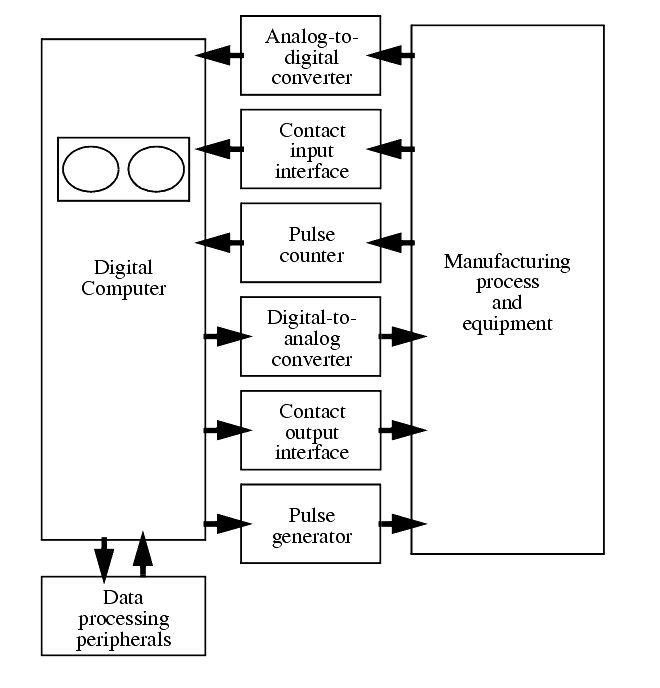6. COMPUTER CONTROL OF PROCESSES
������������Functions of a Process I/O Interface,
- Control the scanning and processing of all the inputs and outputs between the process and the computer.
- Provide conversions of signal levels, compensation for sensor range, and linearization of signals.
- Provide measurements to the various other programming packages which have been converted to engineering units or interpreted in other ways.
Some features found in computer control systems,
- Process initiated interrupts - Prioritized interrupt signals can be used to alert computers to standard notifications, or to initiate an emergency sequence when a critical failure has occurred.
- System and program initiated events - these are for system house keeping, and for communication to other computer systems in a network.
- Operator initiated events - requests for reports, changing of operating parameters, checking quality, etc.
When an interrupt is processed, a small subroutine is run, and then execution returns to the original point in the interrupted program.
If interrupts are not used, then the computer must continuously scan all of its inputs to see if any are critical. But this is not practical for real time processing.
Canonical form (Laplace/frequency domain) control rules can be converted into a form suitable for computers by using `z-transforms'
State space control laws can be converted into computer code using matrix techniques, along with numerical integration.
An example of Computer-process interface
